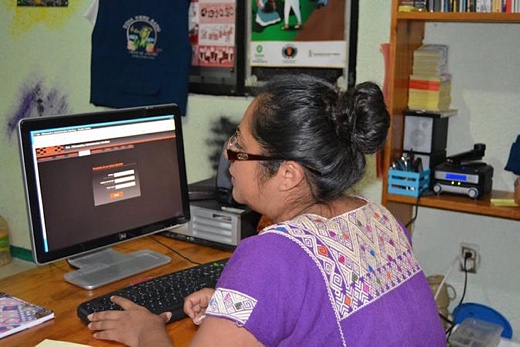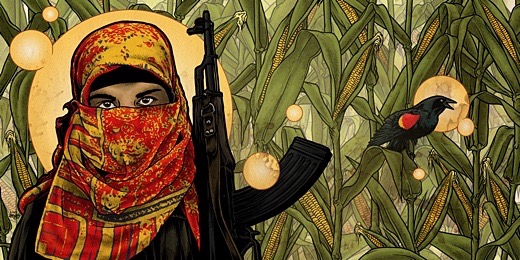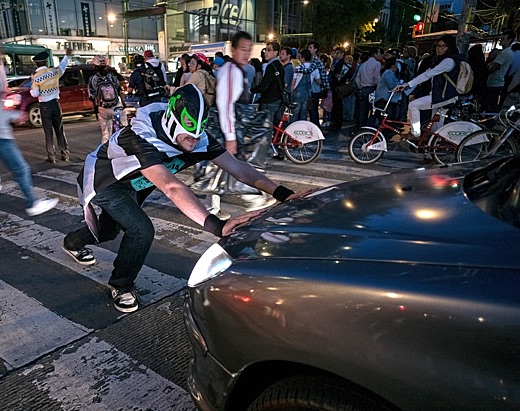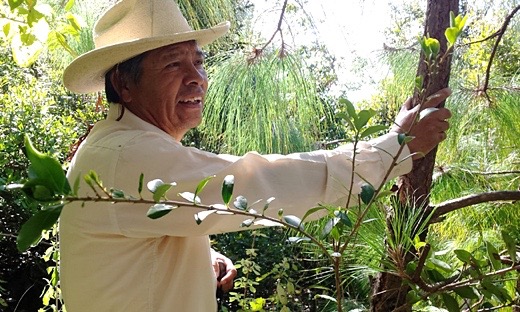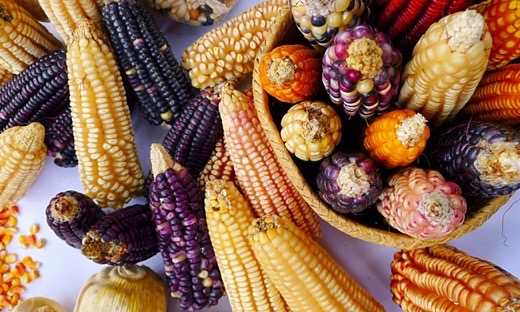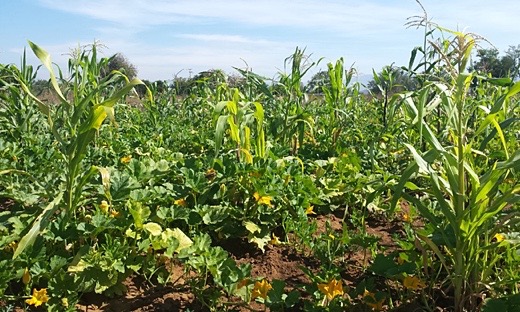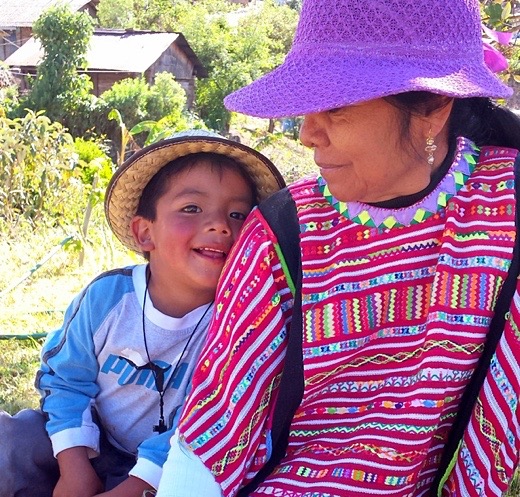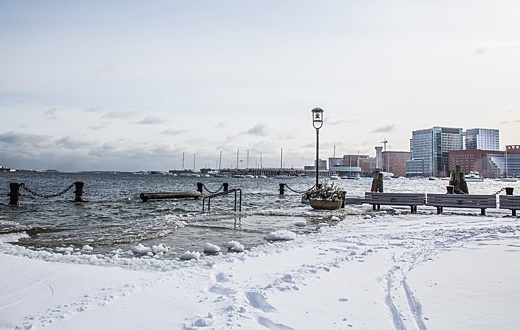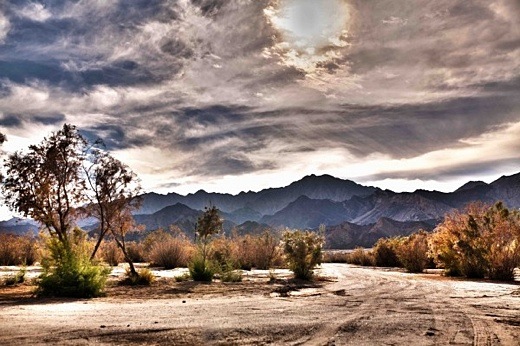SUBHEAD: One of the few defenses local indigenous people have against big-ag GMO capitalism.
By Michael Meurer on 18 February 2017 for Truth Out -
(http://www.truth-out.org/news/item/39526-seeding-the-future-against-destructive-neoliberal-capitalism)
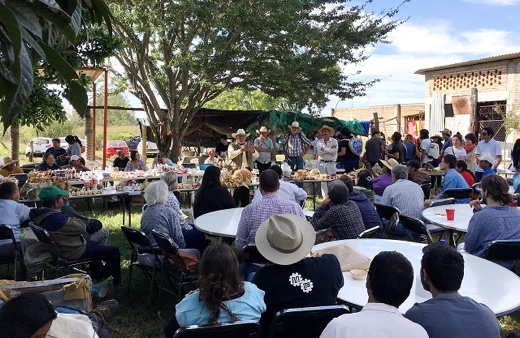
Image above: Speakers at a seed exchange near the Río Santiago in México share planting tips. Photo by Michael Meurer. From original article.
There was much bluster about US job losses under NAFTA in the 2016 election, but walking along the banks of the Río Santiago in the pueblo of Juanacatlán, Mexico, the larger impact of the agreement immediately becomes a searing reality. One's eyes and skin burn after only a few minutes' exposure to the toxic spray and sulfurous stench as foaming waves of chemical pollution cascade over a once pristine falls known only a few decades ago as the Niagara of Mexico.
The pollution, which includes large concentrations of arsenic, cadmium, zinc and other heavy metals used in electronics fabrication, is partly driven by unregulated NAFTA and domestic manufacturing, and also by toxic runoff from export-oriented agribusiness that, unlike traditional campesino farming, relies heavily on chemical fertilizers and pesticides. Fusion magazine dubbed the Santiago the "river of death." Vice magazine describes it as a "toxic hell" that caused 72 deaths in 2015 alone.
Compliance with barely existent environmental regulations in Mexico is voluntary under NAFTA, something that is rarely mentioned in the US. NAFTA's Chapter 11 even allows foreign corporations to sue the Mexican government for imposing regulations they consider to be unfair or burdensome.
On November 20, 2016, Mexico's Revolution Day, I was invited by my friend Miyuki Takahashi, a native Mexican-Japanese doctor who runs the educational Jardín de Vida project (Garden of Life) in Juanacatlán, to accompany her and nearly 400 residents from towns and villages located near the river as an independent journalistic observer during a protest against its poisoning.
The protest action was organized in part by Un Salto de Vida (USV), or A Leap of Life, a civic organization formed by local farmers near the town of Salto, which is across the river from Juanacatlán.
After the protest, we were invited to the 14th annual reunion and seed exchange organized by USV and the local Jalisco chapter of the Red de Alternativas Sustenables Agropecurias (RASA), or Network of Sustainable Agricultural Alternatives, made up of small farmers who live along the Santiago watershed. They come together annually to celebrate the culture of sacred corn, water and trees and to "sow seeds of rebellion," per the email recap to attendees, on which they graciously copied me.
About 80 small farmers met this year in Juanacatlán to share success stories from their use of heirloom seeds that have often been in their families for generations.
The focus was corn (maíz), which is a historic and sacred staple crop of Mexican rural culture that has been undercut by mass imports of subsidized, genetically modified corn from the US since NAFTA was signed in 1994.
After many speeches, attendees spent several hours exchanging heritage seeds and talking, then shared a meal of roasted pig, beans, organic corn and rice.
One of the speakers, a young man named Alan Carmona Gutiérrez who is a cofounder of USV, gave a speech that started with this remarkable statement: "Seeds are the arms that can win the war against capitalism." ("Las semillas son las armas que pueden ganar la guerra contra capitalismo.")
Alan did not mean capitalism in the abstract. He meant the kind of capitalism that has made the 433-kilometer (269-mile) Río Santiago one of the most lethally toxic and polluted waterways in the world, and that under NAFTA forced Mexico to amend its constitution to allow foreign land ownership. This change opened small landholders, upon whom organic crop diversity depends, to the whims of banks and foreign creditors. These campesinos had been deeded their property for life by the constitution of 1917. NAFTA wiped that legal protection away with the stroke of a pen, leading to a doubling of export farming by large-scale agribusiness by 2015.
Out of necessity, campesinos in nearly every state in Mexico are quietly and irrevocably walking away from this lethal model to create their own alternatives. Small local seed exchanges, such as the one in Juanacatlán, happen across Mexico every year, unheralded by the media. USV, RASA and other farmers' groups like them are engaged in a cooperative, ongoing initiative called the "National Campaign in Defense of Mother Earth and the Territory." The USV announcement of the seed exchange states the goals of this national campaign:
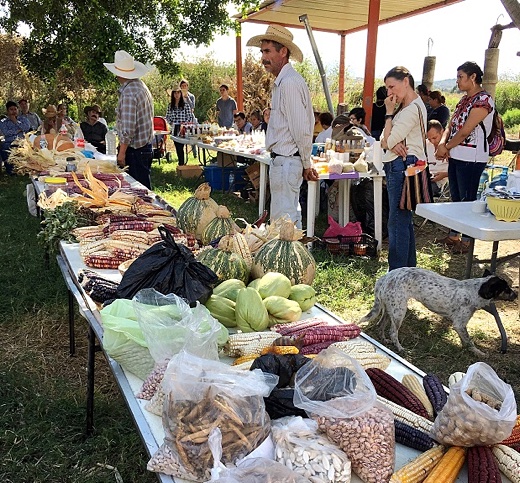
Image above: A table at a seed exchange near the Río Santiago in México displays heritage seeds. Photo by Michael Meurer. From original article..
Micro and Macro Hope
The seed exchange along the Río Santiago is one of many similar experiences with local micro-initiatives that I have encountered during my travels. Having seen these kinds of localized efforts in the US, Europe and Latin America, I knew that a connecting mechanism was still badly needed, something beyond corporate social media platforms, which are essentially large-scale data mining operations.
Enter VIC (Vivero de Iniciativas Ciudadanas/Nursery of Citizen Initiatives), a new open source, Creative Commons project that is finding, mapping and connecting local micro-initiatives, such as Alan's USV. Their work reveals some of the most hopeful signs I have seen that underneath the media radar, people are taking matters into their own hands, reinventing and rebuilding civic life.
VIC was started by a group of architecture and urban design students in Madrid who won an open bid by the city government to design and build a memorial in honor of 191 victims of the horrific terrorist bombings at the central Atocha Train Station in 2004.
The resulting memorial is a 36-foot-tall glass cylinder that is illuminated from below at night. Floating inside the cylinder is a colorless film that is inscribed with thousands of messages of condolence from citizens of Madrid that visitors see in lighted motion above them.
In addition to allowing citizens to become a living, interactive part of the memorial, the messages provide an illuminating glimpse of an alternative city that is vibrantly alive with unsuspected interconnections and pulsing with an underground civic life that no one knew existed.
This brilliant memorial eventually led to the VIC initiative, which is focused on developing and disseminating what Medialab-Prado calls "collective intelligence for real democracy" ("Inteligencia colectiva para una democracia real.").
Medialab-Prado is an award-winning "citizen laboratory" funded by the City of Madrid for the production and dissemination of citizen-driven projects that embody collaborative cultural exploration using digital networks. VIC's work mirrors and expands this sensibility, and it has now spread across Spain and Latin America, while I am helping with political and academic introductions in the US.
VIC's deceptively simple and powerful central idea, which is both diagnostic and descriptive, is to find and map local citizen-driven initiatives at the micro level and to connect them at the macro level, with all information available interactively to the public under Creative Commons licensing.
The micro-initiatives that are being mapped have always existed. They are what might be called the non-monetized social economy, and VIC field work over the past decade shows that their numbers increase during times of economic or social duress.
What has been missing among the motive elements of the non-monetized economy is rigorous diagnostic analysis, mapping of interrelationships, mutual awareness of other civic actions and an easy, collaborative, citizen-managed way to connect, collaborate and endure.
In spite of the formal analytic rigor they bring to their work, VIC members and their network of collaborators across Europe and the Americas often talk in a language that seems vital and primal compared to the stilted, scripted jargon of the neoliberal media. There is incessant discussion about honoring the "affective environment" of particular social-political projects, of "doing politics with pleasure" in "open spaces of unforeseen possibility," etc.
Their sources of inspiration are too eclectic to be pigeonholed ideologically. I would describe the underlying beliefs as forming a non-ideological politics of joy, collaboration and discovery, but undergirded by rigorous diagnostic research and hard data.
Paul Hawken, a long-time advocate of natural capitalism (an imperfect concept that nevertheless has value) once described the hundreds of thousands of citizen's initiatives across the world as "humanity's immune response to resist and heal political disease, economic infection and ecological corruption."
Despite the eloquence of Hawken's description, it lacks a deeper diagnostic understanding of motive force and a clear means for interconnection and collaboration. VIC social mapping and diagnostics, along with their highly collaborative open methodology, have the potential to solve this problem.
During just one afternoon amid a 12-day series of Open Labs fora titled "Cities that Learn" ("Ciudades que Aprenden") held from November 28-December 9, 2016, at the National Library in Mexico City, 10 initiatives were showcased to reflect the characteristics of thousands of similar micro-initiatives VIC has mapped in Mexico, Argentina, Colombia, Uruguay, Ecuador, Brazil and Spain over the past decade.
I watched the presentations for all 10 of these beautiful citizen's initiatives, which ended in a candlelit singalong in the library's grand, open-air Octavio Paz salon. The leaders of these projects are working, often with very little funding, to improve and democratize education, public transportation, public art, historic cultural preservation and much more. And now, in a wonderful development, they are tangibly connected to one another with common open-source tools.
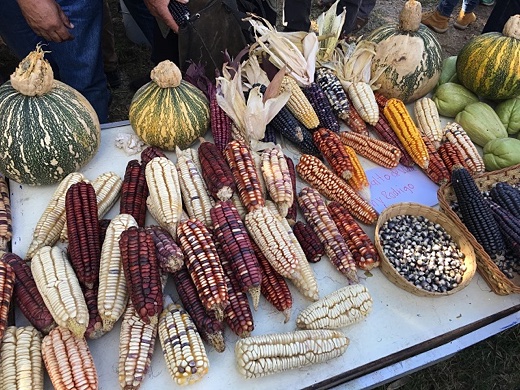
Image above: Varietal heirloom corn is displayed at the 14th annual seed exchange along the Río Santiago in México. Photo by Michael Meurer. From original article.
Rebuilding Civic Life
Civic life worldwide has been in decline for decades. From the publication of the original Bowling Alone thesis by Robert Putnam in 1996, to Planet of Slums, Mike Davis's survey of global shantytowns in 2006, there is an enormous and growing body of academic literature and field work documenting a radical decline in the range, variety and frequency of the kinds of free civic associations that used to bring people together face-to-face to solve community problems, teaching tolerance, civility and political maturity in the process.
Open-source projects, such as VIC alone cannot rebuild this lost civic life. But they can provide a connecting vision, a model, inspiring examples, tools and social mapping for those who are already doing so. As VIC member and cofounder Javier Esquillor explained to me recently over dinner in Guadalajara, this kind of social mapping and open source collaboration could even reinvent tourism as a force for civic good.
The UN World Tourism Organization estimates that more than 1.1 billion people traveled internationally in 2015. Ignoring questions about ecological impact, the UN celebrates this tourism as a great economic stimulus and simply makes tepid recommendations that encourage tourists to "buy local."
Yet, what if a billion people wandering aimlessly around the planet with their tourist guides and selfie sticks were instead empowered to connect with people running local micro-initiatives in areas of mutual interest? The municipal government of Madrid is already using VIC maps as their official city tourist-map-cum-guide.
Having the Courage to Dream
Civic life cannot flourish in an atmosphere of dread over the future. In order to thrive politically, we need dreams, romance, entertaining stories, a bold and engaging vision of a just and sustainable future that is still anchored in our collective history, cultural diversity and the courage to pursue these things most passionately when it is hard. In a world filled with corporate propaganda and miserabilist doomsayers on both the left and right, the joy of doing so is proportionate to the challenge.
Like all newborns, the emerging open-source civic movement that reflects this hopeful sense of experimentation and possibility is tiny and fragile.
But it is also scalable because it is focused on empowering actions and initiatives that are already organically embedded in, or growing out of, the non-monetized part of people's daily lives worldwide. It therefore has the potential over time to reimagine and recreate an open, collaborative civic society of sufficient strength and diversity to dramatically expand the range of what is politically possible.
The destructive ethos of rapacious, late-stage neoliberalism and its regime of globalized capital is not inevitable. In many ways, it exhibits signs of imminent collapse and derangement.
Like the Soviet regime symbolized by the Berlin Wall, what seems insurmountable one day can collapse the next. But that collapse started years earlier with small local civic movements among workers and citizens in Poland, Czechoslovakia and across the Eastern Bloc. Former Polish President Lech Walesa called it the "Power of the Powerless."
Although the technological and social environments are very different today, the world is at a similar crossroads against an oppressively monolithic neoliberal economic philosophy that is losing both its ability to adapt and the reluctant faith of its population.
In this crisis of political legitimacy, the success of the open-source civic movement exemplified by VIC and the enormous potential of hundreds of thousands of micro-initiatives with the ability to connect worldwide, take on a much greater sense of urgency. They may soon be required to engage at a higher level.
.
By Michael Meurer on 18 February 2017 for Truth Out -
(http://www.truth-out.org/news/item/39526-seeding-the-future-against-destructive-neoliberal-capitalism)

Image above: Speakers at a seed exchange near the Río Santiago in México share planting tips. Photo by Michael Meurer. From original article.
There was much bluster about US job losses under NAFTA in the 2016 election, but walking along the banks of the Río Santiago in the pueblo of Juanacatlán, Mexico, the larger impact of the agreement immediately becomes a searing reality. One's eyes and skin burn after only a few minutes' exposure to the toxic spray and sulfurous stench as foaming waves of chemical pollution cascade over a once pristine falls known only a few decades ago as the Niagara of Mexico.
The pollution, which includes large concentrations of arsenic, cadmium, zinc and other heavy metals used in electronics fabrication, is partly driven by unregulated NAFTA and domestic manufacturing, and also by toxic runoff from export-oriented agribusiness that, unlike traditional campesino farming, relies heavily on chemical fertilizers and pesticides. Fusion magazine dubbed the Santiago the "river of death." Vice magazine describes it as a "toxic hell" that caused 72 deaths in 2015 alone.
Compliance with barely existent environmental regulations in Mexico is voluntary under NAFTA, something that is rarely mentioned in the US. NAFTA's Chapter 11 even allows foreign corporations to sue the Mexican government for imposing regulations they consider to be unfair or burdensome.
On November 20, 2016, Mexico's Revolution Day, I was invited by my friend Miyuki Takahashi, a native Mexican-Japanese doctor who runs the educational Jardín de Vida project (Garden of Life) in Juanacatlán, to accompany her and nearly 400 residents from towns and villages located near the river as an independent journalistic observer during a protest against its poisoning.
The protest action was organized in part by Un Salto de Vida (USV), or A Leap of Life, a civic organization formed by local farmers near the town of Salto, which is across the river from Juanacatlán.
After the protest, we were invited to the 14th annual reunion and seed exchange organized by USV and the local Jalisco chapter of the Red de Alternativas Sustenables Agropecurias (RASA), or Network of Sustainable Agricultural Alternatives, made up of small farmers who live along the Santiago watershed. They come together annually to celebrate the culture of sacred corn, water and trees and to "sow seeds of rebellion," per the email recap to attendees, on which they graciously copied me.
About 80 small farmers met this year in Juanacatlán to share success stories from their use of heirloom seeds that have often been in their families for generations.
The focus was corn (maíz), which is a historic and sacred staple crop of Mexican rural culture that has been undercut by mass imports of subsidized, genetically modified corn from the US since NAFTA was signed in 1994.
After many speeches, attendees spent several hours exchanging heritage seeds and talking, then shared a meal of roasted pig, beans, organic corn and rice.
One of the speakers, a young man named Alan Carmona Gutiérrez who is a cofounder of USV, gave a speech that started with this remarkable statement: "Seeds are the arms that can win the war against capitalism." ("Las semillas son las armas que pueden ganar la guerra contra capitalismo.")
Alan did not mean capitalism in the abstract. He meant the kind of capitalism that has made the 433-kilometer (269-mile) Río Santiago one of the most lethally toxic and polluted waterways in the world, and that under NAFTA forced Mexico to amend its constitution to allow foreign land ownership. This change opened small landholders, upon whom organic crop diversity depends, to the whims of banks and foreign creditors. These campesinos had been deeded their property for life by the constitution of 1917. NAFTA wiped that legal protection away with the stroke of a pen, leading to a doubling of export farming by large-scale agribusiness by 2015.
Out of necessity, campesinos in nearly every state in Mexico are quietly and irrevocably walking away from this lethal model to create their own alternatives. Small local seed exchanges, such as the one in Juanacatlán, happen across Mexico every year, unheralded by the media. USV, RASA and other farmers' groups like them are engaged in a cooperative, ongoing initiative called the "National Campaign in Defense of Mother Earth and the Territory." The USV announcement of the seed exchange states the goals of this national campaign:
It will not be ideologies that guide us but the desire for freedom, common sense, the sun, the moon and the wind. Against their technology is the knowledge of our ancestors. Against their factories are our spaces for the reproduction of life. Against their repression is our organization.They fight for all of us, not just themselves, and with good reason. According to the Center for Food Safety, just five companies -- Monsanto, DuPont, Syngenta, Dow and Bayer -- account for 62 percent of world seed sales. As Rachel Cernansky recently reported, these same companies own multi-decade patents on many varieties of crop seeds for staple agricultural items found in daily diets worldwide. Alan is not exaggerating at all when he says that seeds are the new arms in the fight for sustainable democratic self-governance.
It is time to exchange our seeds and sow the land with the nobility and tenacity of those who love their mother, it is time to share our knowledge with the transmission of our collective memory of our identities and to recover our own lives, to be guardians and warriors who strive to forge together the world we want, here and now, today and forever.

Image above: A table at a seed exchange near the Río Santiago in México displays heritage seeds. Photo by Michael Meurer. From original article..
Micro and Macro Hope
The seed exchange along the Río Santiago is one of many similar experiences with local micro-initiatives that I have encountered during my travels. Having seen these kinds of localized efforts in the US, Europe and Latin America, I knew that a connecting mechanism was still badly needed, something beyond corporate social media platforms, which are essentially large-scale data mining operations.
Enter VIC (Vivero de Iniciativas Ciudadanas/Nursery of Citizen Initiatives), a new open source, Creative Commons project that is finding, mapping and connecting local micro-initiatives, such as Alan's USV. Their work reveals some of the most hopeful signs I have seen that underneath the media radar, people are taking matters into their own hands, reinventing and rebuilding civic life.
VIC was started by a group of architecture and urban design students in Madrid who won an open bid by the city government to design and build a memorial in honor of 191 victims of the horrific terrorist bombings at the central Atocha Train Station in 2004.
The resulting memorial is a 36-foot-tall glass cylinder that is illuminated from below at night. Floating inside the cylinder is a colorless film that is inscribed with thousands of messages of condolence from citizens of Madrid that visitors see in lighted motion above them.
In addition to allowing citizens to become a living, interactive part of the memorial, the messages provide an illuminating glimpse of an alternative city that is vibrantly alive with unsuspected interconnections and pulsing with an underground civic life that no one knew existed.
This brilliant memorial eventually led to the VIC initiative, which is focused on developing and disseminating what Medialab-Prado calls "collective intelligence for real democracy" ("Inteligencia colectiva para una democracia real.").
Medialab-Prado is an award-winning "citizen laboratory" funded by the City of Madrid for the production and dissemination of citizen-driven projects that embody collaborative cultural exploration using digital networks. VIC's work mirrors and expands this sensibility, and it has now spread across Spain and Latin America, while I am helping with political and academic introductions in the US.
VIC's deceptively simple and powerful central idea, which is both diagnostic and descriptive, is to find and map local citizen-driven initiatives at the micro level and to connect them at the macro level, with all information available interactively to the public under Creative Commons licensing.
The micro-initiatives that are being mapped have always existed. They are what might be called the non-monetized social economy, and VIC field work over the past decade shows that their numbers increase during times of economic or social duress.
What has been missing among the motive elements of the non-monetized economy is rigorous diagnostic analysis, mapping of interrelationships, mutual awareness of other civic actions and an easy, collaborative, citizen-managed way to connect, collaborate and endure.
In spite of the formal analytic rigor they bring to their work, VIC members and their network of collaborators across Europe and the Americas often talk in a language that seems vital and primal compared to the stilted, scripted jargon of the neoliberal media. There is incessant discussion about honoring the "affective environment" of particular social-political projects, of "doing politics with pleasure" in "open spaces of unforeseen possibility," etc.
Their sources of inspiration are too eclectic to be pigeonholed ideologically. I would describe the underlying beliefs as forming a non-ideological politics of joy, collaboration and discovery, but undergirded by rigorous diagnostic research and hard data.
Paul Hawken, a long-time advocate of natural capitalism (an imperfect concept that nevertheless has value) once described the hundreds of thousands of citizen's initiatives across the world as "humanity's immune response to resist and heal political disease, economic infection and ecological corruption."
Despite the eloquence of Hawken's description, it lacks a deeper diagnostic understanding of motive force and a clear means for interconnection and collaboration. VIC social mapping and diagnostics, along with their highly collaborative open methodology, have the potential to solve this problem.
During just one afternoon amid a 12-day series of Open Labs fora titled "Cities that Learn" ("Ciudades que Aprenden") held from November 28-December 9, 2016, at the National Library in Mexico City, 10 initiatives were showcased to reflect the characteristics of thousands of similar micro-initiatives VIC has mapped in Mexico, Argentina, Colombia, Uruguay, Ecuador, Brazil and Spain over the past decade.
I watched the presentations for all 10 of these beautiful citizen's initiatives, which ended in a candlelit singalong in the library's grand, open-air Octavio Paz salon. The leaders of these projects are working, often with very little funding, to improve and democratize education, public transportation, public art, historic cultural preservation and much more. And now, in a wonderful development, they are tangibly connected to one another with common open-source tools.

Image above: Varietal heirloom corn is displayed at the 14th annual seed exchange along the Río Santiago in México. Photo by Michael Meurer. From original article.
Rebuilding Civic Life
Civic life worldwide has been in decline for decades. From the publication of the original Bowling Alone thesis by Robert Putnam in 1996, to Planet of Slums, Mike Davis's survey of global shantytowns in 2006, there is an enormous and growing body of academic literature and field work documenting a radical decline in the range, variety and frequency of the kinds of free civic associations that used to bring people together face-to-face to solve community problems, teaching tolerance, civility and political maturity in the process.
Open-source projects, such as VIC alone cannot rebuild this lost civic life. But they can provide a connecting vision, a model, inspiring examples, tools and social mapping for those who are already doing so. As VIC member and cofounder Javier Esquillor explained to me recently over dinner in Guadalajara, this kind of social mapping and open source collaboration could even reinvent tourism as a force for civic good.
The UN World Tourism Organization estimates that more than 1.1 billion people traveled internationally in 2015. Ignoring questions about ecological impact, the UN celebrates this tourism as a great economic stimulus and simply makes tepid recommendations that encourage tourists to "buy local."
Yet, what if a billion people wandering aimlessly around the planet with their tourist guides and selfie sticks were instead empowered to connect with people running local micro-initiatives in areas of mutual interest? The municipal government of Madrid is already using VIC maps as their official city tourist-map-cum-guide.
Having the Courage to Dream
Civic life cannot flourish in an atmosphere of dread over the future. In order to thrive politically, we need dreams, romance, entertaining stories, a bold and engaging vision of a just and sustainable future that is still anchored in our collective history, cultural diversity and the courage to pursue these things most passionately when it is hard. In a world filled with corporate propaganda and miserabilist doomsayers on both the left and right, the joy of doing so is proportionate to the challenge.
Like all newborns, the emerging open-source civic movement that reflects this hopeful sense of experimentation and possibility is tiny and fragile.
But it is also scalable because it is focused on empowering actions and initiatives that are already organically embedded in, or growing out of, the non-monetized part of people's daily lives worldwide. It therefore has the potential over time to reimagine and recreate an open, collaborative civic society of sufficient strength and diversity to dramatically expand the range of what is politically possible.
The destructive ethos of rapacious, late-stage neoliberalism and its regime of globalized capital is not inevitable. In many ways, it exhibits signs of imminent collapse and derangement.
Like the Soviet regime symbolized by the Berlin Wall, what seems insurmountable one day can collapse the next. But that collapse started years earlier with small local civic movements among workers and citizens in Poland, Czechoslovakia and across the Eastern Bloc. Former Polish President Lech Walesa called it the "Power of the Powerless."
Although the technological and social environments are very different today, the world is at a similar crossroads against an oppressively monolithic neoliberal economic philosophy that is losing both its ability to adapt and the reluctant faith of its population.
In this crisis of political legitimacy, the success of the open-source civic movement exemplified by VIC and the enormous potential of hundreds of thousands of micro-initiatives with the ability to connect worldwide, take on a much greater sense of urgency. They may soon be required to engage at a higher level.
.
